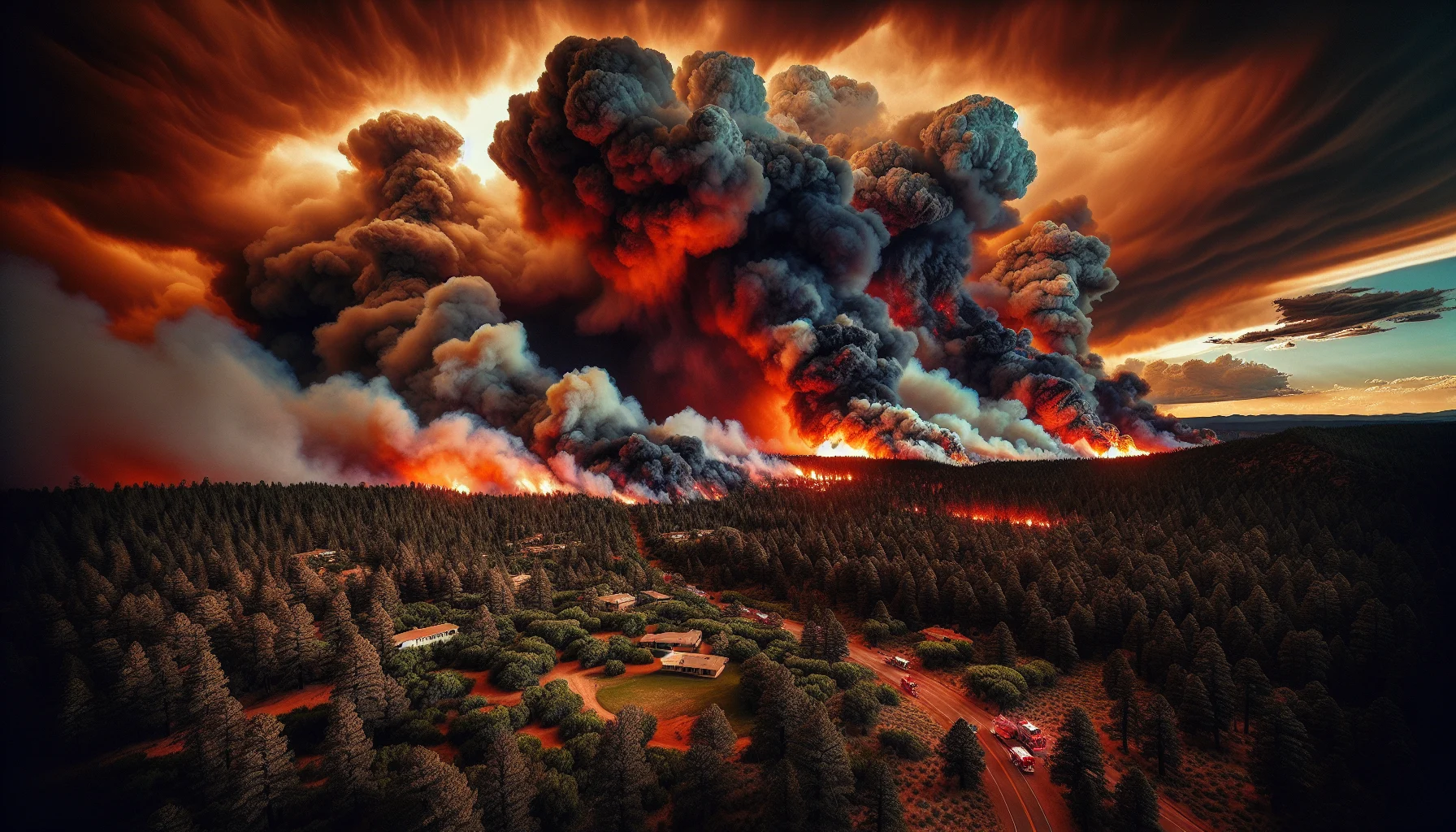
Cerro Grande Fire
by: The Calamity Calendar Team
May 4, 2000
A Smoldering Intent
In the quiet corners of New Mexico’s Bandelier National Monument, fire's double-edged role is well-known. On the one hand, it cleanses and renews, a vital force for ecological balance. But when mishandled, flames can turn merciless, becoming an uncontainable beast. On May 4, 2000, a seemingly routine decision made by the National Park Service—to ignite a prescribed burn to prevent future wildfires—turned catastrophic. This would become known as the Cerro Grande Fire.
Prescribed burns are typically deliberate, calculated events. The intent, to reduce dry brush, thus discouraging the spread of future wildfires, seemed prudent. Yet, nature, with its unpredictable temperament, would soon upend the best-laid plans.
Fanning the Flames
The first sparks of the controlled burn took as expected. The curated blaze danced in the open spaces of Bandelier, each flame swallowed tinder with purpose. However, it was mere hours before an unexpected shift. Changes in wind patterns, underestimated in their force, turned allies into adversaries. By May 5, the fire leapt beyond anticipated borders.
Winds up to forty miles per hour fueled the blaze, pushing it throughout the dry wilderness faster than any strategy could rein in. The flames turned feral, gaining momentum and breeding urgency. May 7 and 8 saw the fire grow exponentially—dry vegetation catalyzing a wildfire beyond measure. Near Los Alamos, a town synonymous with scientific innovation and home to the storied Los Alamos National Laboratory, anxiety mounted. The advancing inferno would soon reach its doorstep.
The March to Los Alamos
As May 10 dawned, terror had already flickered through Los Alamos like an errant ember: the fire was imminent. The skies choked with smoke, turning day into a grim dusk. An evacuation was ordered, leaving streets eerily silent behind retreating residents. Amidst the scramble, residents hoped for no less than a miracle to spare them their homes and community.
The laboratory, a nucleus for nuclear research, was now precariously close to danger. Decades of groundbreaking work risked incineration. Yet, through the valiant efforts of emergency response teams—firefighters, scientists, and countless volunteers wielding hoses and bravery—the laboratory itself remained unscathed by the flames, though tensely encircled.
Thanks for subscribing!
But the fire consumed more than landscapes. It swept through homes—400 homes reduced to ashes in its furious wake. Families faced both the immediate anguish of displacement and the long-term burden of recovery. Properties lost, livelihoods disrupted, dreams singed in the cinders.
Containment and Cost
It was not until nearly two weeks later, by May 20, that control was regained. The combined efforts of numerous firefighting units had finally contained the fire after it had devoured approximately 48,000 acres. Though the flames had ceased their terrifying advance, the scars they etched were indelible.
The economic aftermath proved staggering: an estimated $1 billion in property damage. Federal disaster funding poured in to aid the bereft community of Los Alamos. Tents replaced homes in some places, serving as a constant reminder of the relentless force of nature and the missteps that had catalyzed it.
Lessons and Legacy
The Cerro Grande Fire demanded introspection. Scrutiny fell on the procedures and risks associated with prescribed burns. Criticism of the National Park Service’s oversight was inevitable and necessary—a report from the U.S. General Accounting Office would later highlight systemic flaws that allowed the fire to bolt free of its constraints. Policy reforms reshaped how controlled burns would be managed in the future.
As the ashes settled, so did resolve; a determination not to repeat the mistakes of the past became apparent. Advanced satellite technologies and improved weather prediction models came to the fore, ensuring enhanced monitoring of future controlled burns. Understanding needed to evolve alongside a climate in flux, urging fire management strategies to adapt continually.
Today, the memory of the Cerro Grande Fire is a testament to the delicate balance between human intent and nature's will. It serves as a stark reminder of the fine line prescribers tread—and the unpredictability inherent in that dance. The image of Los Alamos, the burned landscape silhouetted against a vibrant yet haunting sky, endures as a symbol of resilience amidst calamity, a marked chapter in New Mexico’s enduring relationship with fire.
Stay in the Loop!
Become a Calamity Insider and get exclusive Calamity Calendar updates delivered straight to your inbox.
Thanks! You're now subscribed.